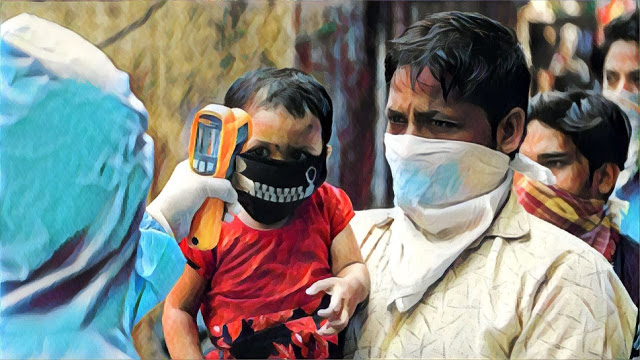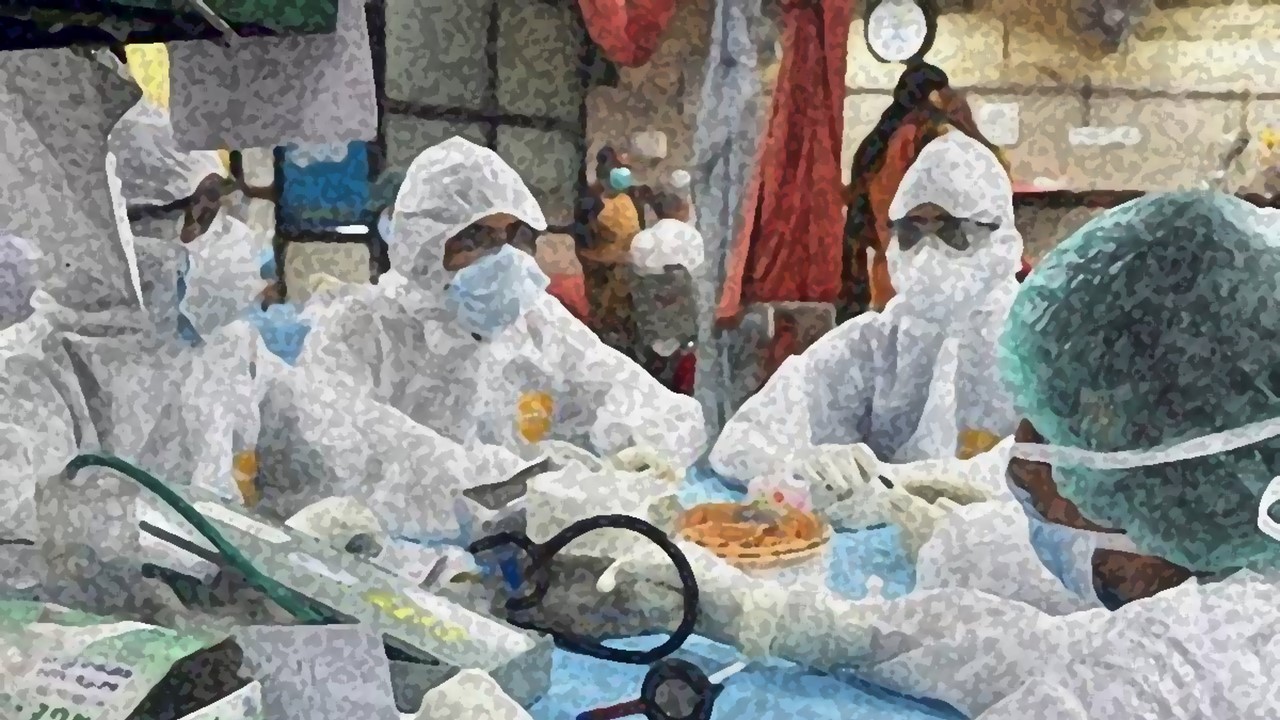Children are always at risk of getting cross infections from others as they are still in their growing stage and even more so if they have comorbidities like congenital heart disease, asthma, malnutrition, etc. Socio-economic factors like poor hygiene, poverty, overcrowding at home, lack of awareness, etc. make the situation worse in a resource-limited country like India. At the hospital where I work, every day barring the summer months, there would be 15 to 30 admissions of respiratory cases. This admission rate reaches its peak in monsoon and winters during which the climate is favorable for exacerbation of reactive airway disease like asthma. Contrary to developed nations, only a tiny number of children get Influenza and Pneumococcus vaccine which are among the most common organisms causing infective lung diseases.
The COVID pandemic turned the world upside down from March onwards. This unprecedented viral disease completely changed the dynamics of our world to such an extent that, in the future, history will be described as pre-COVID and post-COVID periods. It changed the way we interact with each other, the way we travel, the way we greet each other, the economic policies, the cost of living, etc. We realized that we can live without restaurants, we need to have food security, health infrastructure is more important than a 182-meter tall statue and we need to practice hygiene. This pandemic is an ideal situation to conduct a ‘before and after study’.
At SAT Hospital (Mother and Child Wing of GMC Thiruvananathapuram), we expect admissions of at least 15 respiratory cases every day as it is a tertiary care center. However, from the last week of March 2020 onwards since the onset of the COVID pandemic, there has been a gradual decrease in the respiratory cases at our OP clinic and casualty. The decreasing trend then went on to reach such a level that the admissions of respiratory infection cases nearly came down to zero. At no single point of time at Thiruvananthapuram Medical College, I have seen a respiratory ward with less than 5 patients. I had an assumption that these infections are difficult to control as they spread fast from person to person, especially in children. This decline can partially be attributed to the summer season but despite the early onset rainy season, cough and breathing problems haven’t affected our children much. In this article, I would like to give logical explanations for this trend and the lessons that we can learn from it.
Hygiene practices and social distancing
As most of the children don’t take the precautions while coughing, droplet spread of the pathogens used to be quite common and with the introduction of masks, this problem has abated to a certain extent. Unlike popular notion, the maximum spread of the respiratory infections spread by fomites (objects that came in contact with patients like towel, books, cooking utensils, etc.) and by physical contact like handshakes, and not by cough alone. Hand hygiene using soap and hand sanitizers effectively reduced the bacterial load of our hands which consequently helped in decreasing the chest infections in children.As parents kept their children within their homes in accordance with the social distancing and lockdown protocols, the cross-infection rate dropped significantly leading to fewer incidences of respiratory infections in children. As schools are shut, the interaction between children decreased and that helped in curbing the spread of various respiratory pathogens. Tours and visits to relatives’ homes weren’t possible during the lockdown and so was having food from restaurants.
No more hospital and doctor shopping
Top class medical facilities notwithstanding, developed countries also took a hit from the COVID pandemic. The United States and Italy are among the worst affected countries in terms of mortality and this has led to worldwide panic among the common people. People understood that the infectivity of COVID is superlative and staying out of your house can predispose to acquire this deadly disease. This has led to decreased hospital visits of patients who had a trivial illness. The public learned that intermittent colicky pain or mild leg pain can be managed at home itself rather than seeking expert care for the same. Hospital is a hub of bugs which are multiple antibiotics resistant and visiting a hospital itself can predispose to such an infection. It took a COVID pandemic for the public to learn this lesson that hospitals are not for trivial complaints.
What we can learn from these observations
Even though schools and social interactions are necessary for a day to day life, we can minimize the risk of cross infections by emphasizing on hand hygiene and cough etiquette. Even after the COVID pandemic, children with comorbidities like congenital heart disease, children who are on steroid therapy for a long duration, etc. should continue to use masks at public places. Along with the plethora of information that we install into the grey matter of children, we need to teach them how to wash hands, how to cough when they amidst their friends, and how infections spread. It is even more important that we should stay away from hospitals for trivial complaints. If the child hasn’t passed stool for one day but the child is playful and feeding well, we can wait for a few more days and there is no need to rush to the hospital. Cough with one-day duration in a school going child can be managed at home if he doesn’t have any breathing difficulty and similarly, a small white patch over skin doesn’t require a casualty visit.
We achieved a lot in child health through immunization and advanced treatment modalities, and if we want to push the horizon further, I think preventive measures like hand hygiene is the way.
Please give your valuable feedback as comments in the comments section.

